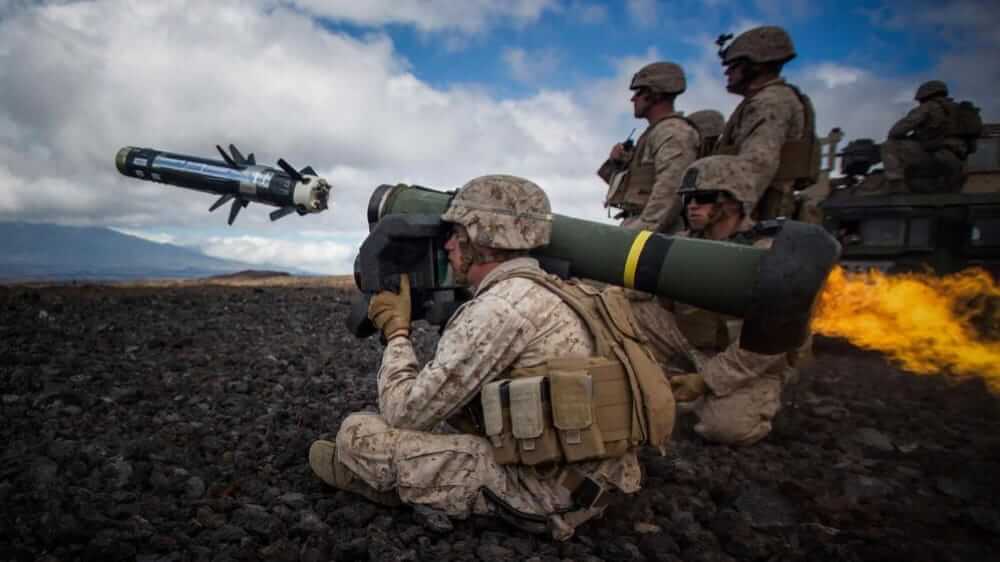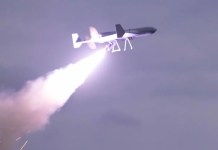The number of Russian tank losses in Ukraine has reportedly reached a staggering 2000, according to a report released on May 29 by open-source intelligence organization Oryx.
Russia Fumes As M777 Howitzer, Challenger-2 Tank, Bradley IFV Developer Plans To Open Office In Ukraine
“This list only includes destroyed vehicles and equipment of which photo or video graphics evidence is available. Therefore, the amount of equipment destroyed is significantly higher than recorded here,” says the report.
According to the latest findings, approximately 1,239 tanks have been destroyed, 106 tanks damaged, 113 abandoned, and 544 captured by Ukraine Army.
Many images of severed turrets and burned-out wrecks of Russian tanks have made headlines, eroding the Russian Army’s image of invincibility. Experts have contended that the threat of Ukraine’s anti-tank missiles, drones, and artillery renders Russian tanks vulnerable on modern battlefields.
According to previous reports, the unprecedented tank losses (especially of the T-72B3 variant) had compelled the Russian military to pull out its Soviet-era tanks.

Seventy-year-old tanks like the T-54 and the T-55 were reportedly pulled and deployed to the frontlines, signaling a setback to the Russian Army after losing most of its tanks to the Ukrainian counterfire.
Some military observers blame the vulnerability of Russian tanks owing to their design and structure in the context of modern combat, while others have blamed it on Russia’s political and military leadership, as well as constantly failing battlefield strategies that have contributed to the routing of its armored units.
How Did Russia Manage To Lose So Many Tanks?
Experts believe Russian overconfidence resulted in significant tank losses early in the conflict, particularly during the failed offensive on Kyiv when many tanks and armored vehicles were obliterated on routes north of the city.
As the assault failed, numerous tanks were captured.
Retired Maj. Gen. Patrick Donahoe, the former head of the US Army’s Maneuver Center of Excellence at Fort Benning, Georgia, told EurAsian Times, “Russian tank design is fundamentally flawed. Since the advent of the autoloader in Soviet tanks, the turret and thus the tank commander and gunner sit on top of the ammo in the same compartment.
“Any penetration of the crew compartment can cause a sympathetic detonation of the ammo carousel under the turret. That’s why we’ve seen so many TikToks where Russian tank turrets explode hundreds of feet in the air. Western tanks do not suffer such catastrophic detonations.”
In addition to the design-related flaws of the Russian tanks, Some initial tank losses were attributed to the climate conditions that restricted the movement of tanks.
Military expert and Indian Army veteran Lt Col JS Sodhi (retd) told EurAsian Times, “Russia launched the offensive on Ukraine when winters were at its peak in Eastern Europe. Thus, with snow covering the entire ground in Ukraine, it was heavy with water content resulting in the ground being soggy. The Russians had no option but to restrict the movement of their troops and tanks on the metaled roads.
Armored warfare emphasizes the dispersed movement of tanks on large frontages cross country to maximize their effect and efficacy. However, this was not possible due to the ground conditions, so these tanks became easy targets for the Ukrainian soldiers equipped with the latest Anti-Tank Guided Missiles (ATGMs).”
Enemy counterfire and dismounted infantry brandishing anti-tank guided missiles (ATGMs) have threatened Russia’s armored force. These ATGMs became the first symbol of the Ukrainian fight against the Russian invasion.
WATCH !!
A Russian T-80U Tank takes a hit from a Ukrainian FGM-148 Javelin, most likely fired by the 21st Motorized Infantry Battalion somewhere in Donetsk Oblast.#T80 #Tank #Russia #Ukraine #Javelin #antitank #MBT #armored pic.twitter.com/gTYyDFiyik— EurAsian Times (@THEEURASIATIMES) May 29, 2023
The Russian Army has reportedly equipped most of its tanks with Explosive Reactive Armor (ERA), a type of boxed armor that employs explosive force to deflect projectiles and defend itself from approaching missiles and rounds. However, Ukrainian ATGMs like Javelin and Stugna-P use thermal sensors to penetrate the ERA.
In addition to lethal ATGMs, Ukraine employed suicide UAVs to obliterate Russian tanks from above, where it was the most vulnerable. In February this year, Ukrainian Marines shared a video compilation of multiple videos showing unmanned aerial vehicles (UAVs) targeting Russian tanks.
The 35th Marine Brigade uses kamikaze drones against Russian tanks. pic.twitter.com/aDqpHlQIMf
— NOELREPORTS ?? ?? (@NOELreports) February 13, 2023
Besides an exemplary performance shown by Ukrainian defenders using cutting-edge ATGMs and modified UAVs, Russia’s battlefield tactics have been flagged as the most crucial factor in the massive tank losses accrued by its Army.
For instance, similar to its tank assault on Kyiv last year, the Russian military marched into Ukrainian positions in Vuhledar, costing them more than 100 armored vehicles. It was one of the biggest battlefield debacles for the Russian Army in the ongoing conflict.
According to several reports and observations by experts, Russian tanks have been struck by Ukrainian troops using anti-tank Javelin missiles while they were loitering in open fields without much support or fire protection.
US Army Major General Patrick Donahoe (retd) told EurAsian Times, “Russian tactics, especially early on in the war of aggression against Ukraine, were abysmal. This reflects a lack of training at the echelon from individual rank crews upward through the Army level. The tanks were employed piecemeal. They were employed without infantry or artillery support. In short, the Russians had failed to employ tanks as part of a combined arms team of infantry, armor, and artillery, along with attack aviation.
“These lessons were learned in the Second World War. Russia forgot them and is now trying to relearn them in an age of combined arms warfare that includes unmanned aerial and ground systems, cyber and information operations at the lowest tactical level.”
Mabey we should start a new show and call it the 'Minefield Masterclasses".
Vuhledar, again. pic.twitter.com/3hnX6z7qeM
— NOELREPORTS ?? ?? (@NOELreports) February 12, 2023
They had also been observed driving directly into minefields before getting blown up, sometimes one after another.
However, after mounting losses that have led to the Russian Army losing face domestically and against Ukraine, Russia is believed to have adjusted its battlefield strategies to streamline tank operations and minimize losses.
Preventing Tank Losses
A report on Russia’s changing military tactics published by UK-based think tank RUSI had given perspective on how Russia has restricted its tank operations to cope with staggering losses.
Titled “Meatgrinder: Russian Tactics in the Second Year of Its Invasion of Ukraine,” the report stated that Russian tank operations are suffering due to tactical changes and force protection.
According to the report, Russia has upped using ERA on its tanks, even on surfaces that do not need ERA protection. The report’s authors said Ukrainian ATGM operators informed them that, on many occasions, they struck Russian tanks but could not knock them out.
Although ERA is quite powerful, the Ukrainians are aware of where a Russian tank’s weak points are so that they can kill it in one shot. For example, spots between the turret and the front glacis plate and tracks—which can be hit for a “mobility kill” that could force Russian operators to abandon the vehicle—are critical.
“This is because a tank’s mobility is considered the best means of protection against artillery, and its survivability is compromised if it is immobilized,” the report said.
The Russians have become more careful with driving their tanks into Ukrainian formations. “The Russian use of armor has evolved significantly during the conflict,” the RUSI report said.
As part of a new strategy, tanks are primarily used for artillery and fire support and to raid Ukrainian positions. However, Russia has occasionally used some older tanks to support breach operations in urban combat.
Although this strategy helps to cut down on casualties, it also hinders Russia from using the firepower, mobility, and shock value that tanks bring to the table to deliver breakthroughs and exploit advances on the battlefield, reducing Russia’s overall offensive capacity.
Most importantly, the Russians have modified their tanks to conceal them from anti-tank-guided missiles. Anti-thermal equipment is being added to vehicles and defensive positions.
Anti-tank guided missiles, which employ infrared sensors to lock onto a target, are less effective due to the altered engine deck and heat plume.

Also, the Russians are altering the hours of the day they engage in combat. Russian forces have discovered that fighting at dusk and dawn when the vehicle temperature is most similar to the ambient temperature of the surroundings is advantageous when trying to camouflage their armor from Ukrainian missile systems.
According to the report, this circumstance is called a “thermal crossover.” At such moments, Russian tanks and other armored vehicles are harder to detect through thermal imagery, making them significantly less vulnerable to Javelins and other weapons.
The Russians, according to the report, have somewhat succeeded in “a significant decrease in the probability of kill from several ATGM types,” but they were only able to do so by “imposing a range of tactical constraints” on their armor, which eventually reduced the effectiveness of their tanks.
A Ukrainian counteroffensive using the Western tanks delivered to Kyiv is anticipated to be launched soon. This would further challenge the Russian Army, which is still coping with the massive losses of its war machines.
- Contact the author at sakshi.tiwari9555 (at) gmail.com
- Follow EurAsian Times on Google News




